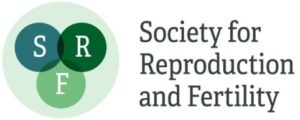Anniversary and Special Issues
Reproductive Toxicology
The November 2021 issue of Reproduction contains a special editorial on Reproductive Toxicology guest edited by Dr Aileen F Keating and Dr Adam J Watkins.
This special series was designed to provide further insight into female reproductive toxicity with review papers on emerging toxicants and emerging cellular targets.
This special issue describes several aspects of reproductive toxicity and highlights where deficits remain and how specific developmental windows of exposure can be critical for the resultant outcomes.
Explore this special issue:
EDITORIAL
Reproductive Toxicology. Dr Aileen F Keating and Dr Adam J Watkins
Author(s): Aileen F Keating and Adam J Watkins
SPECIAL REVIEW
The male mammary gland: a novel target of endocrine-disrupting chemicals
Author(s): Gillian K Szabo and Laura N Vandenberg
Author(s): Vasiliki E Mourikes and Jodi A Flaws
Author(s): Afsaneh Khoshkerdar, Ece Eryasar, Hannah L Morgan, and Adam J Watkins
Author(s): Heather B Patisaul
Author(s): Troy A Roepke and Nicole C Sadlier
Author(s): Hui Li and Daniel J Spade
Author(s): Diana K Haggerty, Kristen Upson, Diana C Pacyga, J Ebba Franko, Joseph M Braun, and Rita S Strakovsky
Watch this video from Guest Editor, Professor Adam Watkins.
https://www.youtube.com/watch?v=GEH0RCkAG-U
25th Anniversary of cloning by somatic-cell nuclear transfer
The July 2021 issue of Reproduction contains a special editorial on 25th Anniversary of cloning by somatic-cell nuclear transfer guest edited by Dr Kevin D Sinclair.
The issue opens with a brief historical perspective of the scientific legacy of Dolly from one of the co-authors (Prof Dr Angelika Schnieke) of the article that first reported this development in 1997. Klinger & Schnieke (2021)summarise current applications of SCNT and discuss its relevance in the 21st century. There then follows two articles that each provide both a historical and contemporary perspective on the role of SCNT in the generation of GM livestock. The first article (Polejaeva 2021) provides a detailed overview of the technical advances made in GM technologies over the past 25 years from a leading member of the team that produced the first cloned pigs by SCNT in 2000. This article also offers a perspective on the current and future role of SCNT in the creation of genetically engineered animals; a perspective that is extended by Galli & Lazzari (2021) who consider applications in several large-animal species together with intellectual-property and regulatory challenges that will ultimately determine its use.
Explore this special issue:
25th Anniversary of cloning by somatic-cell nuclear transfer. Dr Kevin D Sinclair.
Editorial
Dolly at 25… is she ‘… still goin’ strong?’ Author(s): Kevin D Sinclair
Anniversary Review
- 25th ANNIVERSARY OF CLONING BY SOMATIC-CELL NUCLEAR TRANSFER Twenty-five years after Dolly: how far have we come? Author(s): Bernhard Klinger and Angelika Schnieke
- 25th ANNIVERSARY OF CLONING BY SOMATIC CELL NUCLEAR TRANSFER: Generation of genetically engineered livestock using somatic cell nuclear transfer Author(s): Irina A Polejaeva
- 25th ANNIVERSARY OF CLONING BY SOMATIC-CELL NUCLEAR TRANSFER: Current applications of SCNT in advanced breeding and genome editing in livestock Author(s): Cesare Galli and Giovanna Lazzari
- 25th ANNIVERSARY OF CLONING BY SOMATIC-CELL NUCLEAR TRANSFER: Scientific and technological approaches to improve SCNT efficiency in farm animals and pets Author(s): Pasqualino Loi, Luca Palazzese, Pier Augusto Scapolo, Josef Fulka Jr, Helena Fulka, and Marta Czernik
- 25th ANNIVERSARY OF CLONING BY SOMATIC-CELL NUCLEAR TRANSFER: Epigenetic abnormalities associated with somatic cell nuclear transfer Author(s): Atsuo Ogura, Shogo Matoba, and Kimiko Inoue
- 25th ANNIVERSARY OF CLONING BY SOMATIC-CELL NUCLEAR TRANSFER: Nuclear transfer and the development of genetically modified/gene edited livestock Author(s): Ramiro Alberio and Eckhard Wolf
- 25th ANNIVERSARY OF CLONING BY SOMATIC-CELL NUCLEAR TRANSFER: Cloning, mitochondrial replacement and genome editing: 25 years of ethical debate since Dolly Author(s): Andy Greenfield
Research
- Different regulation of IRE1α and eIF2α pathways by oxygen and insulin in ACH-3P trophoblast model Author(s): Veronika Tandl, Denise Hoch, Julia Bandres-Meriz, Sanela Nikodijevic, Gernot Desoye, and Alejandro Majali-Martinez
- Urocortins exhibit differential effects on PGE2and PGF2α output via CRHR2 in human myometrium Author(s): Xingji You, Zixi Chen, Qianqian Sun, Ruojin Yao, Hang Gu, and Xin Ni
- Role of cAMP/PKA/CREB pathway and β-arrestin 1 in LH induced luteolysis in pregnant rats Author(s): Akshi Vashistha, H Rahaman Khan, and Medhamurthy Rudraiah
- miR-3074-5p/CLN8 pathway regulates decidualization in recurrent miscarriage Author(s): Nan Meng, Xinyue Wang, Yan Shi, Yanyan Mao, Qian Yang, Baohui Ju, Qianxi Zhu, Tingting Zhang, Yan Gu, and Xuan Zhang
- Muscarinic acetylcholine receptor M5 is involved in spermatogenesis through the modification of cell–cell junctions Author(s): Xiao Han, Cong Zhang, Xiangping Ma, Xiaowei Yan, Bohui Xiong, Wei Shen, Shen Yin, Hongfu Zhang, Qingyuan Sun, and Yong Zhao
- Obesity modifies the implantation window and disrupts intrauterine embryo positioning in rats Author(s): María Victoria Bazzano, Gisela Belén Sarrible, Martín Berón de Astrada, and Evelin Elia
- Melatonin ameliorates ovarian dysfunction by regulating autophagy in PCOS via the PI3K-Akt pathway Author(s): Fenfen Xie, Junhui Zhang, Muxin Zhai, Yajing Liu, Hui Hu, Zhen Yu, Junqiang Zhang, Shuai Lin, Dan Liang, and Yunxia Cao
- Differential effects of trichostatin A on mouse embryogenesis and development Author(s): Cheng Peng, Zhuo Lv, Tang Hai, Xiangpeng Dai, and Qi Zhou
- Effects of postovulatory oviduct changes and female restraint stress on aging of mouse oocytes Author(s): Qiao-Qiao Kong, Guo-Liang Wang, Jin-Song An, Jia Wang, Hao Cheng, Tao Liu, and Jing-He Tan
Watch this video from Guest Editor, Professor Kevin Sinclair
https://www.youtube.com/watch?v=owtD-acldmM
Hypoxia and Reproductive Health
The January 20201 issue of Reproduction contains a special editorial on hypoxia and reproduction guest edited by Dr Jacqueline Maybin.
This editorial comprises seven diverse reviews exploring how varying oxygen levels can change reproductive biology from the non-pregnant reproductive system, through early pregnancy, foetal development and delivery.
Each review gives a comprehensive overview of current knowledge, and signposts areas for future research in the rapidly evolving field of hypoxia and reproduction.
Explore this special issue:
EDITORIAL
Hypoxia and reproductive health. Jacqueline A Maybin
SPECIAL REVIEW
The presence and role of hypoxia in the endometrium. Rocío Martínez-Aguilar, Lucy E Kershaw, Jane J Reavey, Hilary O D Critchley, and Jacqueline A Maybin
The role of hypoxia in the development and progression of endometriosis. Wan-Ning Li, Meng-Hsing Wu, and Shaw-Jenq Tsai
Hypoxia and ovarian function: follicle development, ovulation, oocyte maturation. Megan Lim, Jeremy G Thompson, and Kylie R Dunning
Hypoxic regulation of preimplantation embryos: lessons from human embryonic stem cells. Franchesca D Houghton
Oxygen and development of the human placenta. Graham J Burton, Tereza Cindrova-Davies, Hong wa Yung, and Eric Jauniaux
Hypoxia and labour. Susan Wray, Mona Alruwaili, and Clodagh Prendergast
Reproductive challenges at high altitude: fertility, pregnancy and neonatal well-being. Lorna G Moore
Watch this video from Guest Editor, Jacqueline Maybin
30 years of pre-implantation genetic testing
The November 2020 issue of Reproduction includes special content on pre-implantation genetic testing, which is guest edited by Professor Alan Handyside, who reported the first pregnancies using this technique in Nature in 1990. The special content includes an Editorial from Professor Handyside, followed by five free-to-read reviews, from authors including Laurent Tellier, Joris Robert Bermeesch and Kathelijn Keymolen.
Explore the special content:
EDITORIAL: 30 years of preimplantation genetic testing. Alan H Handyside.
REVIEW: Non-invasive prenatal testing for aneuploidy, copy-number variants and single-gene disorders. J Shaw, E Scotchman, N Chandler, and L S Chitty.
REVIEW: Preimplantation genetic testing for polygenic disease risk. Nathan R Treff, Diego Marin, Louis Lello, Stephen Hsu, and Laurent C A M Tellier.
REVIEW: Single-cell technologies at the forefront of PGT and embryo research. Olga Tšuiko, Elia Fernandez Gallardo, Thierry Voet, and Joris Robert Vermeesch.
REVIEW: Chromosome abnormalities in human embryos. Carmen Rubio, Lorena Rodrigo and Carlos Simón.
REVIEW: Clinical experience of preimplantation genetic testing Martine De Rycke, Veerle Berckmoes, Anick De Vos, Stefanie Van De Voorde, Pieter Verdyck, Willem Verpoest, and Kathelijn Keymolen.
Watch this video from the Guest Editor, Professor Alan Handyside
IVF Special Issue, guest edited by Lord Robert Winston
The July 2018 issue of Reproduction marked the 40th anniversary of the first birth of a baby conceived by in vitro fertilisation. The issue is guest edited by Lord Robert Winston who, in his editorial, expresses concerns that advances in the field of reproductive medicine may be being hampered by a lack of fundamental academic research, which may be a result of regulatory bureaucracy.
The issue contains seven free-to-read anniversary reviews:
Low-dose gonadotropin induction of ovulation in anovulatory women: still needed in the age of IVF
Davinia M White, Kate Hardy, Suzannah Lovelock, and Stephen Franks
Female fertility preservation: past, present and future
Benjamin Fisch and Ronit Abir
Chromosomal analysis in IVF: just how useful is it?
Darren K Griffin and Cagri Ogur
C L O’Neill, S Chow, Z Rosenwaks, and G D Palermo
In vitro follicle culture in the context of IVF
Anamaria C Herta, Francesca Lolicato, and Johan E J Smitz
‘Designer babies’ almost thirty years on
Alan H Handyside

